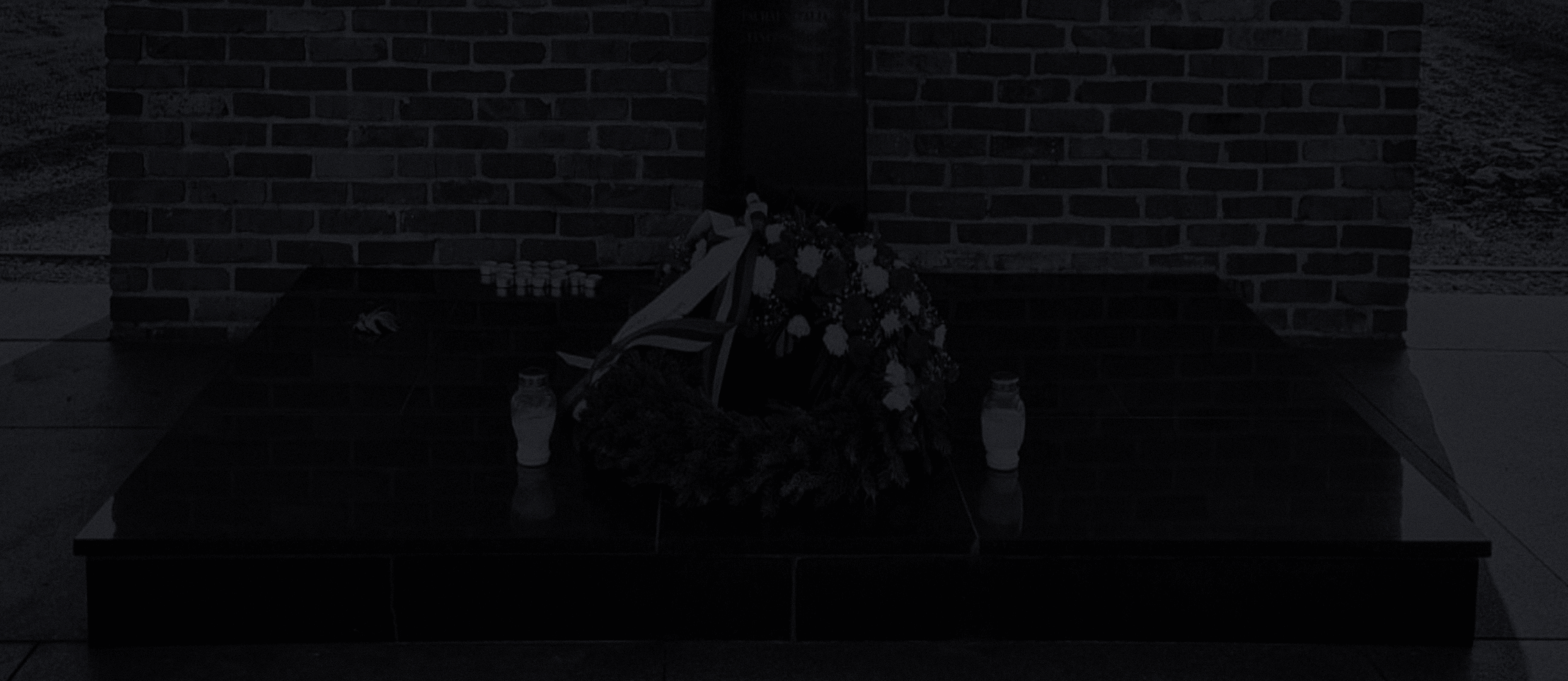06
MEMORY

The racially-motivated persecution of Italian Sinti and Roma people remained for decades guiltily shrouded in oblivion. The survivors have kept and passed on, within the Sinti and Roma communities, the unbearable burden of memory, which has only been shared by some segments of Italian society for the past ten years or so. Remembering what happened means becoming aware of yesterday's responsibilities, in order to firmly confront today the prejudice, hatred and discrimination that affects Roma and Sinti people. In Germany, this journey began in April 1980, when the German Parliament recognised that Sinti and Roma people had been the objects of racial persecution.
The European Parliament on 15 April 2015 passed Resolution 2015/2615 (RSP), solemnly recognising the historical fact of the genocide of Roma and Sinti people that took place during the Second World War.
Since the early 2000s, Italian local institutions in particular have begun to listen to the communities and offer public spaces to celebrate the Holocaust Remembrance Day, during which observers bear witness to the racially motivated persecution suffered by Sinti and Roma people during Nazi-Fascism.
However, the request of these communities to amend Law 211/2000 "Establishment of the Holocaust Remembrance Day", which still does not recognise the extermination and persecution of Sinti and Roma people, remains unheeded by the Italian Parliament.
Zigeunerlager, Auschwitz-Birkenau BIIe
In the 1970s, Vincenz Rose, a German sinter, erected a monument in Auschwitz-Birkenau's sector BIIe in memory of the approximately 21,000 Sinti and Roma people exterminated in the Zigeunerlager. On the night of 2 August 1944, the last four thousand surviving Sinti and Roma men, women and children were exterminated. On the morning of 3 August, silence enveloped the Zigeunerlager.
Every 2 August, Sinti and Roma communities, together with European institutions, commemorate the genocide. In 2007, Romani Rose, president of the Zentralrat Deutscher Sinti und Roma, restored the monument.
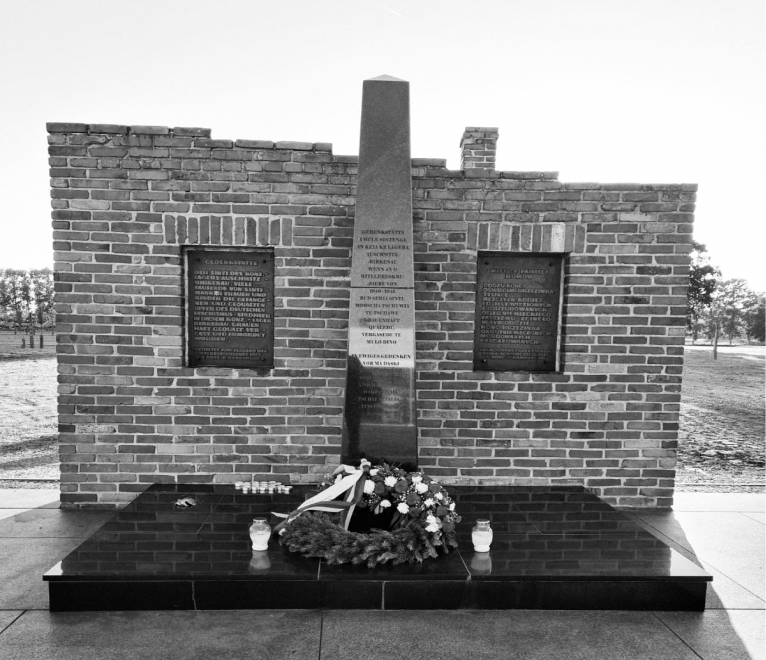
European Sinti and Roma Genocide Memorial
In Berlin, next to the German Parliament, the memorial created by artist Dani Karavan, commemorating the genocide of Sinti and Roma people in Europe, was erected on 24 October 2012. The work consists of a round water basin with a triangular stone stele in the centre, the shape of which is reminiscent of the triangle sewn on the clothes of deportees. The flower on the stele is a symbol of life and a reminder of the Sinti and Roma people exterminated. When the flower withers, it sinks into the stele in the depths of the well and a new fresh flower rises from the water. The poem by Santino Spinelli, a Roma artist from Abruzzo, is engraved on the stone of the memorial.
Places of memory
On 10 April 2010, in Prignano sulla Secchia (MO), the Federazione Rom e Sinti Insieme, together with the municipal administration, erected the first commemorative plaque on the site of a fascist concentration camp for Italian Sinti and Roma people. A year earlier, a plaque had been unveiled in Bolzano on the wall of the lager in Via Resia, in memory of Sinti victims of the Holocaust, commissioned by the Nevo Drom association and the municipality of Bolzano. Between 2012 and 2013, plaques were placed in the main internment sites in Italy thanks to the Memors project, in which the Roma and Sinti Together Federation participated.
This action of reviving memory, which is still ongoing, was not limited to the places of internment; it also prompted the Sinti and Roma communities to indicate a place of remembrance in some Italian cities where they were present during the Nazi-Fascist persecution.
The communities worked to spread the history of the extermination in Italian society by organising conferences, public meetings and screenings, also with the participation of Sinti and Roma people who survived the genocide.
Prignano sulla Secchia concentration camp
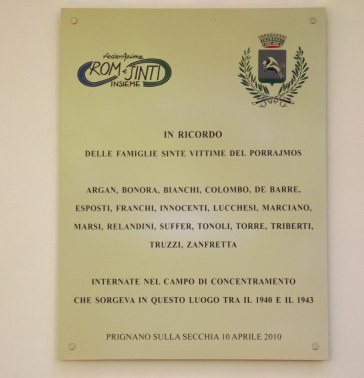
On 10 April 2010, a plaque was unveiled on the current municipal administration building, in memory of the sinister families interned there since 1940. The plaque bears the surnames of the families
Tossicia concentration camp
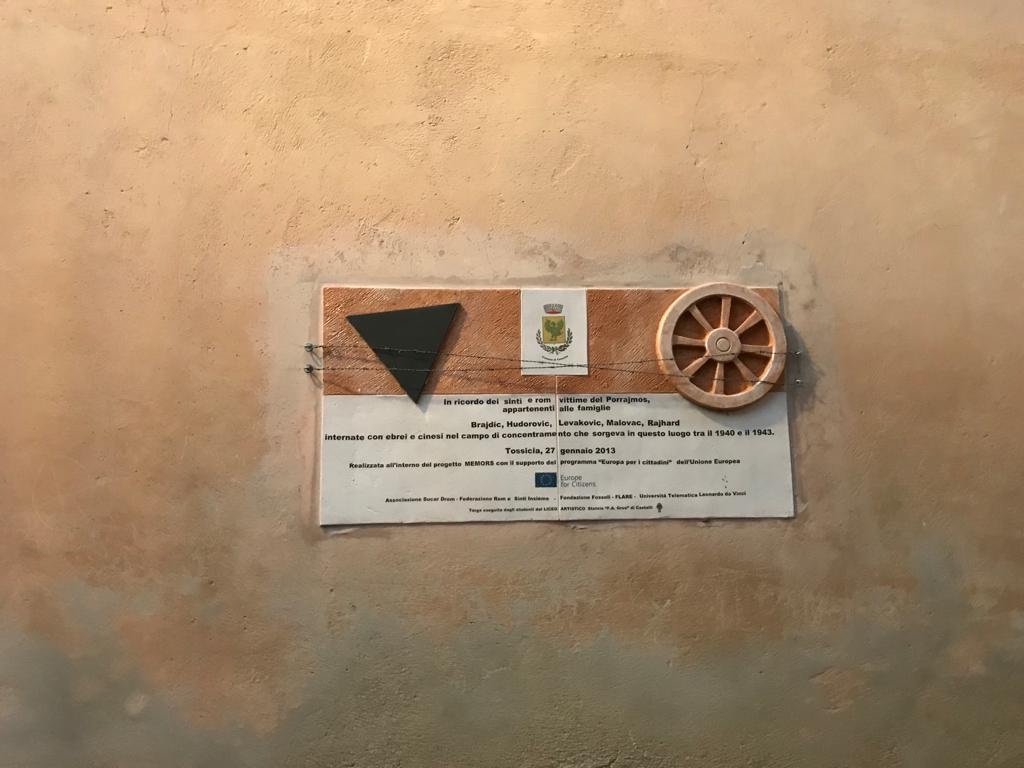
On 27 January 2013, a plaque was unveiled at the building where Roma and Sinti people, together with Jewish and Chinese citizens, were interned from 1940 onwards. The memorial site was established thanks to the Memors project, in cooperation with the municipal administration.
Agnone concentration camp
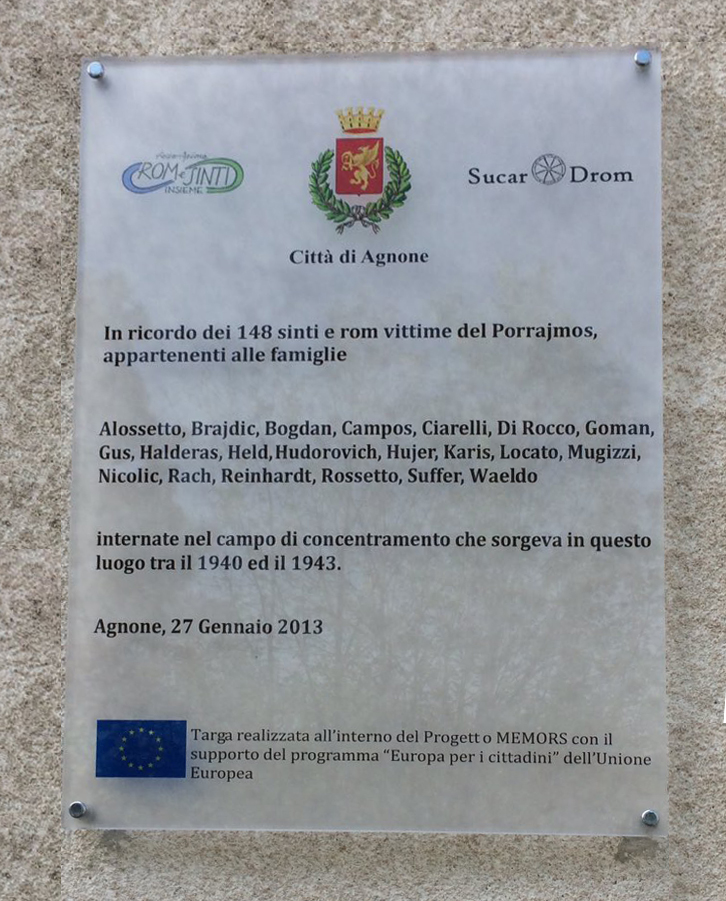
In the municipality of Agnone, on 27 January 2013, on the occasion of Holocaust Memorial Day, a plaque was unveiled on the former monastery of San Bernardino, the current site of a residence for the elderly, in memory of the Roma and Sinti families interned there since 1940. The plaque, affixed thanks to the Memors project, bears the surnames of the affected families.
Bolzano concentration camp
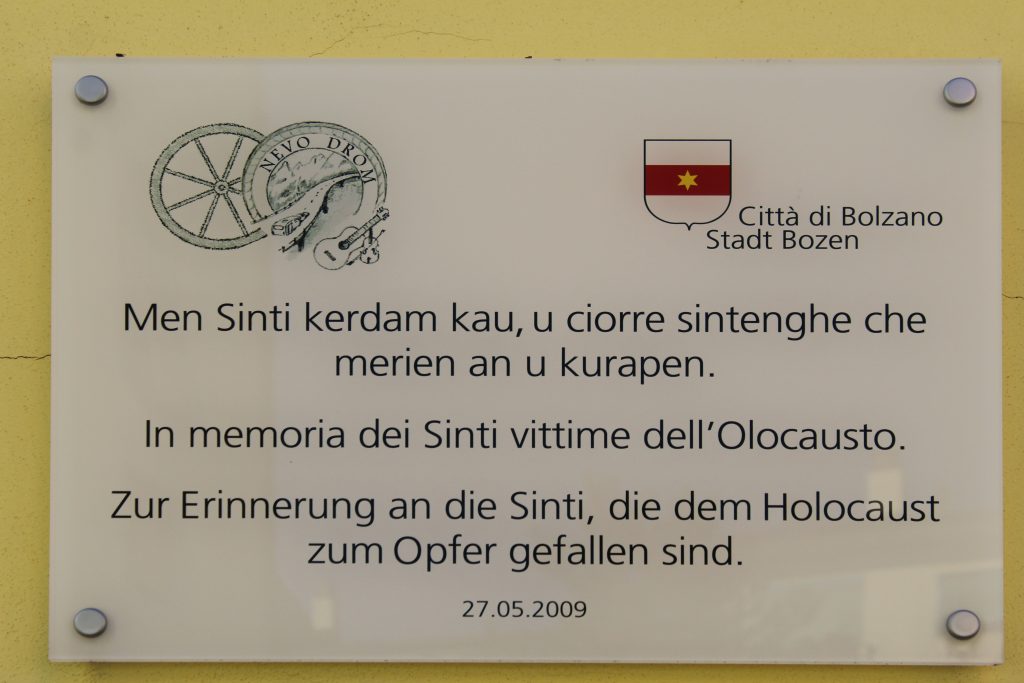
On 27 May 2009, the Nevo Drom Association and the Municipality of Bolzano unveiled a plaque in memory of the sincere victims of the Holocaust. The plaque is affixed to the boundary wall of the Bolzano concentration camp. In the same year, the plaque was twice defaced by unknown persons and promptly restored by the city administration.
Internment in Rocca di Cento in Ferrara
On 27 January 2014, a plaque was unveiled at the Rocca di Cento in Ferrara, where Italian Roma of Spanish origin were interned and later transferred to the Bojano concentration camp. The plaque was affixed thanks to the Memors project. On 8 June 2013, a conference was held at the Ferrara State Archives, organised by the Sucar Drom association on the internment of Sinti and Roma in the Ferrara area.

Roma citizens arrested and deported by the Nazi authorities on May 22, 1940
Bundesarchiv, R 165 Bild-244-48 / CC-BY-SA 3.0
Non c’era mare ai nostri piedi,
anzi, gli siamo
sfuggiti a malapena,
quando - le disgrazie, si dice, non vengono mai sole -
il cielo d’acciaio ci incatenò il cuore.
Abbiamo pianto invano le nostre madri
davanti ai patiboli,
e ricoperto i bambini morti con fiori di mandorlo
per scaldarli nel sonno, il lungo sonno.
Nelle notti nere ci disseminano
per poi strappare noi posteri alla terra
nelle prime ore del mattino.
Ancora nel sonno ti cerco, erba selvatica e menta:
chiuditi, occhio, ti dico,
e che tu non debba mai vedere i loro volti,
quando le mani diventano pietra.
Per questo l’erba selvatica, la menta.
Ti stanno leggere sulla fronte
quando arrivano i mietitori.
Per tutti i rom, sinti e jenische,
per tutte le donne ebree e gli ebrei,
per gli uccisi di ieri e per quelli di domani.
